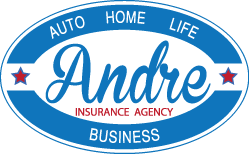
You choose a deductible—which is the amount of money you pay before insurance kicks in—for both your auto and your home policies. Your deductible can be as little as $0 and as high as $10,000 (with lots of options in between).
If you choose a lower deductible, you can generally expect to pay more in premium. Some people prefer to keep a high deductible and pay less in premium, while others prefer lower deductibles and higher premiums. It often comes down to your personal preferences and financial situation.
A better way to choose your deductible
Good news: you have an Erie Insurance agent who can help you select a deductible that best fits your needs. Here are a few tips to keep in mind when you talk with your Erie Insurance agent about deductibles.
- Make sure you have enough money to cover your deductible. Whether your deductible is $50 or several thousand dollars, it’s important to have enough cash on hand to cover it. You’ll want to have enough money to cover the combined cost of your home and your auto deductibles. That’s because if something like a fire damaged or destroyed your home and your car, you may need enough cash to pay both deductibles.
- Check with any lenders to see if you must meet a minimum deductible. If you have a car loan or a mortgage, your lender may say that your deductible can’t go above a set dollar amount.
- Think about what you’d be willing to pay out of pocket. When you file a claim, it’s possible that it may cause your premium to increase. For this reason, some people opt to pay lower-dollar claims out of pocket. Think about if—and how much—you’d be willing to pay to avoid a possible rate increase, then use that information to help choose your deductible.
- Consider different deductibles for different risks. More good news: ERIE gives you the option of choosing different homeowners deductibles for wind or hail, fire or lightning, theft or vandalism, water, and named storm.1 This option is known as by-peril deductibles, and it gives you more control over your deductible. For instance, if you feel the risk of water damage in your area is low, you may opt for a higher water deductible that will let you save on your premium. On the flip side, if you live in an area at risk for hurricanes, you may choose a lower deductible for named storm. While many carriers mandate deductible for these kinds of risks, ERIE gives you options.
- Check in with your Erie Insurance agent every year. Your deductible is not set in stone, and you can raise or lower it as your life changes. Your Erie Insurance agent can give you solid advice and make the change for you. Also keep in mind that ERIE offers many ways to help keep rate increases in check. Just a few include:
- ERIE Rate Lock®: With this feature, even if you have an auto claim, your rates won’t change until you add or remove a vehicle or a driver from your policy and/or change the address of where you garage your car.2 (Not available in New York or North Carolina.)
- First Accident Forgiveness:3 After being claims-free for three years, ERIE won't raise your rate the first time you’re in an at-fault car accident.4
- Feature 15: After your auto policy has been in force for 15 consecutive years, your rate will never be raised after an at-fault accident ever again.4
1. Named storm is not available in Ohio, Wisconsin, New York and Illinois. Hail is not available in New York.
2. Rates subject to change if you add or remove a vehicle, add or remove a driver or change your address. ERIE Rate Lock® does not guarantee continued insurance coverage. Not available in all states. Limited to three years in Virginia. Insured must meet applicable underwriting guidelines. Premium may change if you make a policy change.
3. Available immediately in North Carolina and with an ERIE RateProtectSM policy in New York.
4. Availability varies by state and company; check with your Erie Insurance agent. Please read our disclaimer at erieinsurance.com/disclaimer.
« How to Baby-Proof Your Home Ask ERIE: How Do I Know Which Deductible to Choose? »


